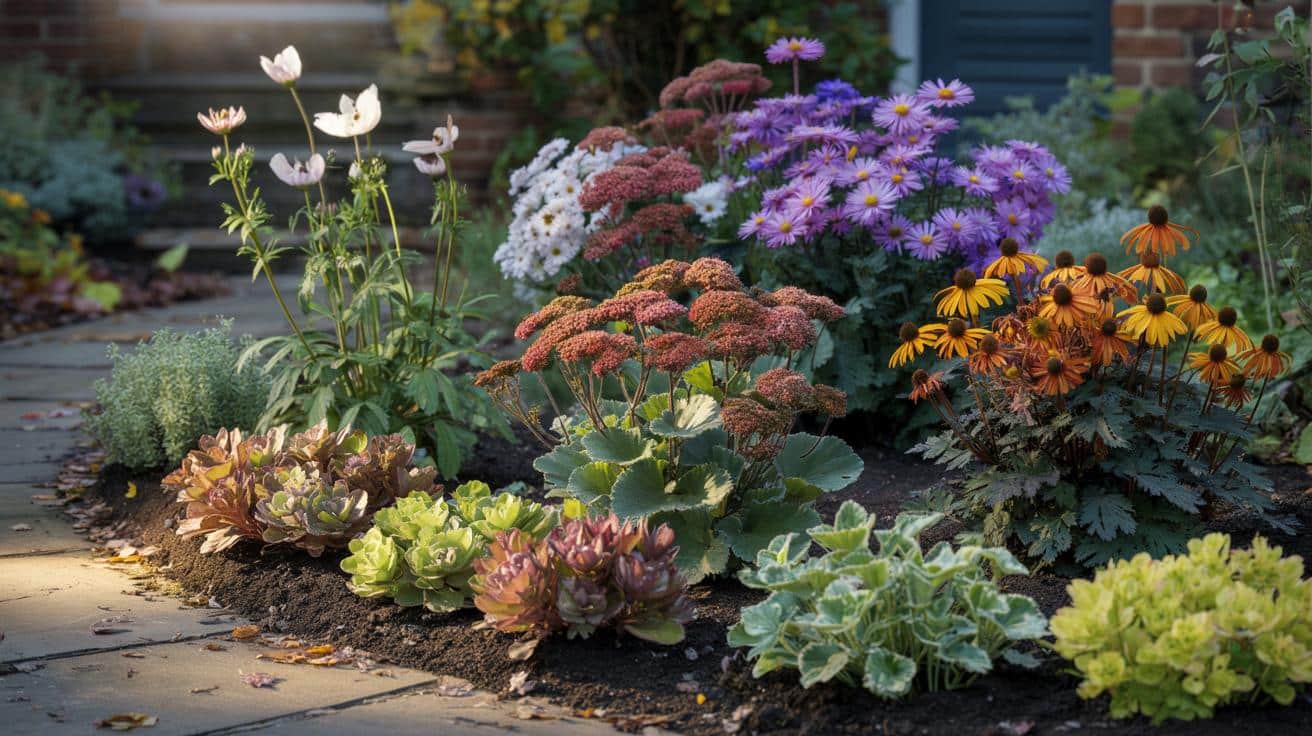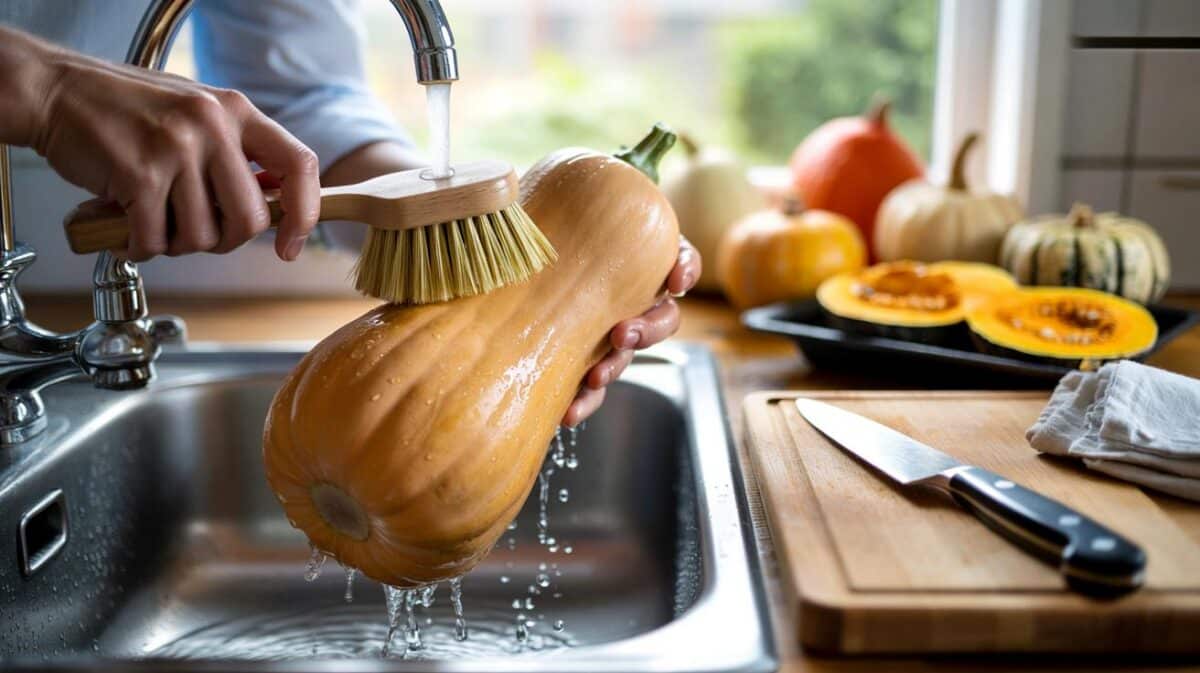While summer fuss fades, soil still holds warmth and the air brings steady moisture. That mix gives new roots an easy run and sets you up for a spring that looks planned, not lucky. Here’s how gardeners in the know use this brief slot to get eye‑catching results without heavy graft.
Why late October changes everything for perennials
By All Saints’ week, heat stress has gone and hard frost is yet to bite. Temperatures fall, but the ground remains workable. Rain arrives in regular pulses. Plants focus on roots, not flowers. That’s your moment.
Plant once the soil is moist and mild. Roots settle fast, watering needs drop, and spring growth arrives in a rush.
Autumn planting also dodges the summer hose. Perennials established now often need 30–50% less watering in their first hot spell. The cooler light prevents scorch on young leaves, while autumn showers keep the soil friable and alive with microbes.
The five plants professionals rate
Want colour from August to November, bold texture, and fewer weekend chores? These five perennials punch above their weight in beds, borders and pots.
Japanese anemone: elegance that bridges late summer and autumn
Japanese anemones push airy stems through August, then keep going into November. White, blush or plum flowers float over tidy foliage. They like moisture at planting, then cope well once settled. Partial shade suits them, though filtered sun works too.
Asters: dense colour exactly when gardens fade
Asters bring daisy stars in waves from September. Compact forms are perfect for pots and front-of-border rhythm; taller sorts anchor the back with structure. Newer varieties resist mildew better. Bees gorge on them on bright, cold days.
Sedum (stonecrop): architectural, drought‑tolerant, and generous
Stonecrops such as Hylotelephium ‘Autumn Joy’ build domed heads that shift from pink to brick‑red. Thick stems laugh off wind. Insects pile in. They thrive in poor, free‑draining soil and love full sun.
Helenium: warm tones that light up grey skies
Helenium fires golden, amber and rust tones when most borders cool down. Give it sunshine and an ordinary soil that holds some moisture. Regular deadheading gives more daisies and keeps clumps neat.
Heuchera: foliage that earns its keep all year
From copper to lime and near‑black, heucheras carry colour even in January. They soften edging, knit gaps, and frame bolder flowers. Partial shade is ideal, though many modern cultivars handle brighter spots if soil stays cool.
| Plant | Ideal position | Height (cm) | Spacing (cm) | Peak months | Notes |
|---|---|---|---|---|---|
| Japanese anemone | Light shade to sun | 80–120 | 45–60 | Aug–Nov | Moist start; mulch to keep roots cool |
| Aster (incl. dwarf) | Sun to light shade | 20–120 | 30–45 | Sep–Nov | Choose mildew‑resistant forms; good for bees |
| Sedum/stonecrop | Full sun, free‑draining | 40–60 | 30–45 | Aug–Oct | Drought‑tolerant; leave seedheads for winter |
| Helenium | Full sun | 60–120 | 45–60 | Jul–Sep | Deadhead; keep evenly moist |
| Heuchera | Partial shade | 20–40 | 30–35 | All year foliage | Watch for vine weevil; refresh mulch yearly |
Planting like a pro, without the fuss
Pick the right spot first
Map the light. Note wind tunnels and damp pockets. Give taller plants the background and shorter ones the front. Keep 30–50 cm between plants to cut disease and allow air to move.
Prepare the soil, then keep your hands off
Fork the area to spade depth. Lift perennial weeds, roots and all. Work in 3–5 cm of peat‑free compost and a light dusting of slow‑release organic fertiliser. Don’t overdo manure with heuchera and sedum; they prefer a leaner mix.
Settle plants at the right depth
Plant so the crown sits level with the soil surface. Water thoroughly to knit soil to roots. Mulch with 3 cm of leafmould or bark, keeping mulch off stems to prevent rot. After that, let the autumn rain do most of the work.
One thorough soak at planting, a mulch, and a finger‑test before any top‑ups will save litres in June.
Design moves that make neighbours pause
Layer colour, height and texture
Use heuchera as a coloured ribbon along a path. Step up with a drift of sedum, then a swathe of asters. Lift the backdrop with Japanese anemones or helenium, depending on light. Repeat the pattern down the border to pull the eye along.
Play the long game with bloom succession
Helenium bridges late summer. Japanese anemones then hold the stage. Asters and sedum close the show. Deadhead little and often to keep the baton passing. Leave sedum seedheads for winter structure and frosted mornings.
- Budget build: five quality 2‑litre plants at £10–12 each = about £60 for a border facelift.
- Time needed: 90 minutes to prepare 2 m², 30 minutes to plant and water in.
- Water savings: established autumn plants often need half the top‑ups of spring plantings in a hot June.
- Wildlife boost: asters and sedum feed late bees; seedheads shelter ladybirds and lacewings.
Common pitfalls, and easy fixes
Mildew on asters
Choose resistant cultivars, give 35–45 cm spacing, and water at the base in dry spells. A June pinch promotes bushier growth that dries quicker after rain.
Floppy anemones
Plant out of strong wind and in groups of three for mutual support. Use discreet hoops early, not after stems sway.
Heuchera vine weevil
Check pots for C‑shaped grubs. In gardens with past issues, use nematodes in late summer and keep soil open and free‑draining.
Your weekend checklist
Extra gains you can bank this autumn
Climate swings make summer watering unpredictable and costly. Autumn establishment acts like insurance: deeper roots stand up better to June scorch and February snaps. A 3 cm mulch now also locks in moisture and stifles winter weeds, saving spring weeding time.
Think about companions that stretch interest beyond flowers. Add evergreen shapes such as yew or pittosporum as anchors, then weave in bulbs between your new perennials. Snowdrops and crocus wake the border early; alliums carry it into May; your helenium then keeps the warm tones going until September. The effect feels rich, yet maintenance stays low.
Five plants, one afternoon, and a £60 spend can buy eight months of colour and a border that looks designed.
If you want to test before you commit, create a 1 m² “pilot bed.” Track how much water you use, how often you deadhead, and when colour peaks. Use that data to scale up with confidence next year. Your neighbours will swear you hired a landscaper; you’ll know it was timing, spacing and a smart plant list.








